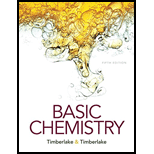
Concept explainers
(a)
Interpretation:
The
Concept Introduction:
According to periodic trends, the atomic size of the element increases from top to bottom, thus, the amount of energy required removing an electron from its outermost shell decreases and it can easily give an electron and show metallic characteristic. Thus, on moving top to bottom, metallic character of an element increases.
Similarly, on moving left to right in a period, atomic size decreases thus, amount of energy required to remove an electron increases and it is difficult to remove an electron. Thus, non-metallic character increases.
(b)
Interpretation:
The symbol of the element that has the largest atomic size in group 2A (2) should be determined.
Concept Introduction:
According to periodic trends, the atomic size of the element increases from top to bottom, thus, the amount of energy required removing an electron from its outermost shell decreases and it can easily give an electron and show metallic characteristic. Thus, on moving top to bottom, metallic character of an element increases.
Similarly, on moving left to right in a period, atomic size decreases thus, amount of energy required to remove an electron increases and it is difficult to remove an electron. Thus, non-metallic character increases.
(c)
Interpretation:
The symbol of the element that has the highest ionization energy in group 8A (18) should be determined.
Concept Introduction:
According to periodic trends, the atomic size of the element increases from top to bottom, thus, the amount of energy required removing an electron from its outermost shell decreases and it can easily give an electron and show metallic characteristic. Thus, on moving top to bottom, metallic character of an element increases.
Similarly, on moving left to right in a period, atomic size decreases thus, amount of energy required to remove an electron increases and it is difficult to remove an electron. Thus, non-metallic character increases.
(d)
Interpretation:
The symbol of the element that has the lowest ionization energy in period 2 should be determined.
Concept Introduction:
According to periodic trends, the atomic size of the element increases from top to bottom, thus, the amount of energy required removing an electron from its outermost shell decreases and it can easily give an electron and show metallic characteristic. Thus, on moving top to bottom, metallic character of an element increases.
Similarly, on moving left to right in a period, atomic size decreases thus, amount of energy required to remove an electron increases and it is difficult to remove an electron. Thus, non-metallic character increases.
(e)
Interpretation:
The symbol of the element that has the electronic configuration
Concept Introduction:
According to periodic trends, the atomic size of the element increases from top to bottom, thus, the amount of energy required removing an electron from its outermost shell decreases and it can easily give an electron and show metallic characteristic. Thus, on moving top to bottom, metallic character of an element increases.
Similarly, on moving left to right in a period, atomic size decreases thus, amount of energy required to remove an electron increases and it is difficult to remove an electron. Thus, non-metallic character increases.
Want to see the full answer?
Check out a sample textbook solution
Chapter 5 Solutions
Basic Chemistry Plus Mastering Chemistry with Pearson eText -- Access Card Package (5th Edition)
 ChemistryChemistryISBN:9781305957404Author:Steven S. Zumdahl, Susan A. Zumdahl, Donald J. DeCostePublisher:Cengage Learning
ChemistryChemistryISBN:9781305957404Author:Steven S. Zumdahl, Susan A. Zumdahl, Donald J. DeCostePublisher:Cengage Learning ChemistryChemistryISBN:9781259911156Author:Raymond Chang Dr., Jason Overby ProfessorPublisher:McGraw-Hill Education
ChemistryChemistryISBN:9781259911156Author:Raymond Chang Dr., Jason Overby ProfessorPublisher:McGraw-Hill Education Principles of Instrumental AnalysisChemistryISBN:9781305577213Author:Douglas A. Skoog, F. James Holler, Stanley R. CrouchPublisher:Cengage Learning
Principles of Instrumental AnalysisChemistryISBN:9781305577213Author:Douglas A. Skoog, F. James Holler, Stanley R. CrouchPublisher:Cengage Learning Organic ChemistryChemistryISBN:9780078021558Author:Janice Gorzynski Smith Dr.Publisher:McGraw-Hill Education
Organic ChemistryChemistryISBN:9780078021558Author:Janice Gorzynski Smith Dr.Publisher:McGraw-Hill Education Chemistry: Principles and ReactionsChemistryISBN:9781305079373Author:William L. Masterton, Cecile N. HurleyPublisher:Cengage Learning
Chemistry: Principles and ReactionsChemistryISBN:9781305079373Author:William L. Masterton, Cecile N. HurleyPublisher:Cengage Learning Elementary Principles of Chemical Processes, Bind...ChemistryISBN:9781118431221Author:Richard M. Felder, Ronald W. Rousseau, Lisa G. BullardPublisher:WILEY
Elementary Principles of Chemical Processes, Bind...ChemistryISBN:9781118431221Author:Richard M. Felder, Ronald W. Rousseau, Lisa G. BullardPublisher:WILEY





